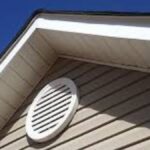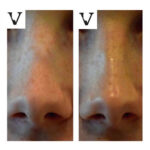If your goal is to “erase” a modest dorsal hump in photos, hyaluronic acid (HA) fillers often win on speed, cost, and downtime. With careful micro-placement above and/or below the bump, the eye reads a straighter line in minutes. You see results before you leave, and because HA is reversible, we can fine-tune or dissolve if needed. Surgical rhinoplasty, on the other hand, reshapes bone and cartilage for permanent change—and can address size reduction and breathing problems in a way filler simply cannot. Many patients start with fillers as a low-commitment “test drive” before considering surgery.
Below, I’ll walk you through how each option works, ideal candidates, recovery timelines, risks, and how to decide what fits your goals.
What each option actually does
Non-surgical nose job (HA fillers)
Think of filler as a contouring tool. By adding tiny, strategic amounts of HA just above and below a dorsal hump, I create a smoother profile line without removing tissue. The nose won’t be smaller in absolute terms, but it often appears smaller and straighter because the transition is even. Results are immediate, with subtle refinement as swelling settles over 2–3 days. The treatment is done in the office, usually in under 20–30 minutes.
Surgical rhinoplasty
Surgery permanently modifies cartilage and bone. A surgeon can reduce a hump, narrow a wide bridge, refine or rotate the tip, address septal deviation, and improve airway function. Procedures vary (open vs. closed approach) and are tailored to anatomy and goals. Recovery involves bruising/swelling for days to weeks, and final results evolve over months as tissues settle.
Who is a good candidate?
Fillers are great when:
- Your bump is small to modest, and your goal is a smoother profile line—especially for photos.
- You have mild asymmetry or a slightly low radix (bridge origin) that benefits from subtle lift.
- You prefer minimal downtime and want the option to reverse or tweak the result.
- You’re testing proportions before committing to permanent change.
Surgery is better when:
- You want permanent structural change or significant size reduction.
- Your nose has a large dorsal hump, major deviation, or complex tip concerns.
- You have functional issues (breathing problems, valve collapse, septal deviation) that require internal correction.
- You’re ready for recovery time and understand the gradual nature of post-op swelling resolution.
What to expect during treatment or surgery
In-office filler visit
We start with standardized photos (front, oblique, profile) and mapping. After antiseptic prep and optional topical numbing, I place micro-deposits of HA along the dorsum and radix to even the profile line. You’ll feel pressure more than pain. I shape gently, have you sit up to check symmetry in natural posture, and we review the result together. You walk out with visible improvement. Plan for 24–48 hours of mild swelling or redness and possibly small bruise dots; most people continue normal life the same day.
Rhinoplasty pathway
You’ll have a surgical consult, exam, and discussion of airway function and aesthetic goals. On surgery day, anesthesia is administered; operative time varies. Splints or tapes may be placed. Expect swelling and bruising around the eyes for several days; many patients take 1–2 weeks of social downtime. You’ll avoid strenuous exercise for a few weeks, follow wound-care instructions, and attend follow-ups. While you’ll see early changes quickly, swelling continues to refine over months.
Longevity and maintenance
Filler results typically last 6–12 months, sometimes longer with conservative maintenance. Because HA integrates with tissue and your body gradually metabolizes it, small touch-ups can keep the profile looking consistent without starting from scratch each time.
Surgical results are permanent, though the nose can continue to change subtly as you age. Revision surgery is sometimes performed for functional or aesthetic reasons, but it’s not routine and should be approached judiciously.
Safety considerations (read this part!)
Both paths have risks.
- Surgery involves anesthesia, bleeding, infection risk, scarring, and the possibility of under- or over-correction. Recovery is predictable in experienced hands but requires commitment to aftercare and follow-ups.
- Fillers in the nose carry rare but serious vascular risks, including skin ischemia and—extremely rarely—vision compromise. Risk is reduced with injector expertise, conservative dosing, precise plane selection, continuous monitoring, and immediate access to hyaluronidase to dissolve HA if needed. Choose a clinician with advanced nasal anatomy training and a clear emergency protocol.
Red flags to report immediately after filler: escalating pain, blanching or mottled skin, gray/blue color change, blistering, or any visual symptoms (eye pain, vision changes). Early evaluation matters.
Cost, time, and recovery at a glance
- Fillers: Short appointment, minimal social downtime, lower upfront cost, maintenance over time. Great for busy schedules or event-driven timelines.
- Surgery: Higher upfront cost, deliberate recovery, no ongoing filler appointments. Consider if you want one-and-done permanence or need airway correction.
(Exact pricing varies by region, provider, and case complexity; I review individualized plans during consultation.)
Visual outcomes: “camouflage” vs. “reduction”
A key mindset shift: Fillers camouflage; surgery reduces. Filler can make a nose look straighter and more proportionate by smoothing light and shadow transitions. In selfies and side views, the hump often “disappears” to the eye. But if your goal is a smaller nose from all angles—or a narrower bony base—only surgery can change the underlying framework to achieve that.
Try before you commit: the “test drive” strategy
If you’re on the fence, an HA trial can preview proportions and profile balance. Many patients learn exactly how much radix support they like, how straight they want the bridge to appear, and whether a subtle tip effect satisfies them. Some stay with maintenance fillers because they love the control and minimal downtime; others use the trial to make a confident decision to proceed with surgery.
Lifestyle and planning tips
- Events & travel: For filler, give yourself at least a week before major events in case a bruise appears; for surgery, plan months ahead to allow healing and photo-readiness.
- Glasses & workouts: After filler, avoid heavy frames on the bridge and strenuous exercise/saunas for 24–48 hours. After surgery, your surgeon will advise when frames and workouts are safe.
- Skin & sun: Gentle skincare and diligent SPF help both filler longevity and surgical scar quality.
How to choose the right provider
- For fillers: Seek a medical professional with advanced training in non-surgical rhinoplasty, a portfolio of nose cases, conservative technique, and in-office emergency readiness (including multiple vials of hyaluronidase).
- For surgery: Choose a board-certified facial plastic surgeon or plastic surgeon with extensive rhinoplasty experience (a high-volume rhinoplasty practice matters). Review before-and-after photos that resemble your starting anatomy.
Bring profile photos you like, a full medication/supplement list, and your goals prioritized (“smooth the hump” vs. “make the nose smaller” vs. “breathe better”). Clear priorities make the recommendation crystal-clear.
Quick decision guide
- You want: fast improvement, minimal downtime, reversible changes → Start with fillers.
- You want: permanent change, smaller nose, airway correction, or large hump reduction → Consult for rhinoplasty.
- You’re unsure: consider a filler test drive, then reassess after living with the look for a few months.
Bottom line
For smoothing a small dorsal hump in photos and everyday life, fillers usually win on convenience, cost, and reversibility. You’ll walk out with a straighter-looking profile in minutes, with little disruption to your week. If you’re seeking permanence, size reduction, or functional breathing improvements, surgical rhinoplasty is the right tool because it reshapes the underlying structure. Both approaches are safe in expert hands, but each carries specific risks and responsibilities. The best choice is the one that matches your goals, your timeline, and your comfort level with maintenance versus a one-time recovery.







